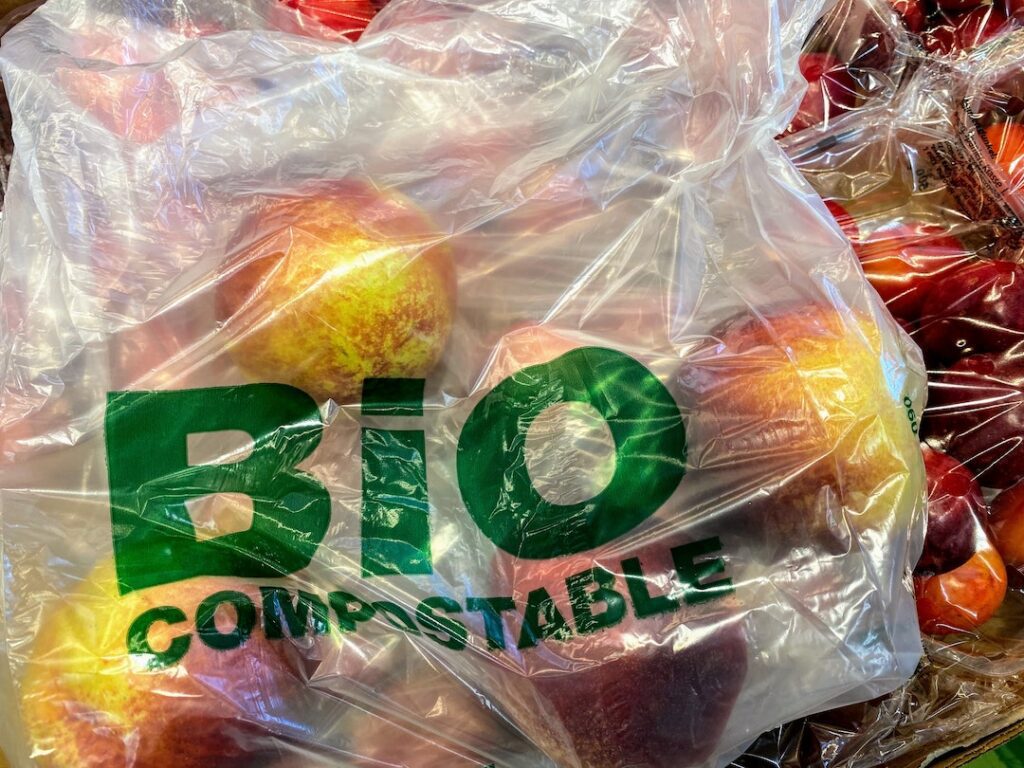Do you believe that plastic can power the future?

The governments and a high percentage of the common public are highly skeptical of the many consumer plastic products as plastic hurts the environment. Everything from the pen in your hand to the tiny buttons on your shirt, from the wrapping you remove from your sandwich to the keyboard that you type on, we cannot deny the extensive use of plastic in our society. It has changed how we live and is also quite an essential part of our daily lives.
Understanding the amount of Plastic Consumption
The figures here will be able to explain things much better. In 1960, the world produced as much as 7 million tonnes of plastic. But the fact is that this wonder product, which has transformed our lives in so many positive ways, has some serious environmental issues both when it is produced and also when it is disposed of. Conventional plastics were manufactured using coal, petroleum, or gas. These are all non-renewal sources of energy. As a result, they are also susceptible to a volatile market wherein the cost and demand are always high.
The disposal of plastic products
The disposal of plastic products is quite a big concern. The irony is that the products that should be used only once or need to have limited use before they are discarded are manufactured in such a way that they last for as many as a hundred lifetimes. This means that every bit of plastic that you have ever used, looked at or opened, or even thrown away remains in some part of the world today.

Many major corporations have promised to reduce the amount of single-use plastics in their products due to consumer preferences and the new law. But it might be difficult for the world economy to ban the use of plastic completely, and therefore companies are coming up with new ways to recycle it.
Though common people do realize that the use of plastic is harmful to the environment, however, it is still proving difficult for the global economy to quit the production of new plastic products completely. Unlike other environmentally friendly practices, there have been attempts made to eliminate the use of plastics. But this has not been directly helpful for many consumer companies.
The influence of plastic consumption in the modern day
Today the world is home to the most technologically advanced, constantly innovative, and globally connected societies. One of the most common denominators for the marvels of the modern world is plastic. This is a material that has been the cornerstone of innovation and technological advancement since the early 20th century. From the cars that we drive to the flights that we board to again the smartphones that we carry and much more, plastics are a part of our daily lives today. More than ever, the stakeholders also realize the role plastics can play in building a more sustainable future. This trend was prevalent during the climate change conference of the United Nations. Here the world leaders gathered to accelerate climate actions and chart some of the actionable paths in the future.
This is how plastics will be able to meet tomorrow’s climate and sustainability goals.
The modern world is no longer stagnant. Governments, businesses, as well as citizens together, are pushing for constant progress and innovation to build a better future, and in recent years, addressing the global climate crisis has been of major importance. Most recently, government leaders and officials from almost 200 countries have gathered in Glasgow at the United Nations Climate Change Conference. The global community has also emphasized various solutions and priorities to address the climate impacts. For many, the goal of this conference also included the reduction of emissions, curbing deforestation, embracing renewable energy, converting to electric vehicles, and building some climate-resilient communities. Plastic has played an important role. If you want to understand how plastic will meet the climate and the sustainability goals of tomorrow, you will have to go through the discussion below:
It will lower emissions.
Bringing down global warming is a top priority. This was made clear United Nations Glasgow conference; just before this conference, as many as 100 countries joined the United States and European Union promising to reduce the use of methane emissions by as much as 30% by the year 2030. The leaders and the scientists have also emphasized the need to keep the global temperature rise below 1.5°C. This is done to avoid the deleterious impacts of the climate. Therefore, reducing greenhouse gas emissions is also critical to this effort, and the less energy-intensive production and lightweight nature of plastic have made it an excellent tool for curbing emissions.
Though there are certain alternative materials also like cotton, paper, and glass, which are often depicted as more sustainable in comparison to plastic the life cycle assessments, have found that plastic is the better environmentally friendly option. For example, the researchers have also found that a standard plastic straw has as much as 60% less global warming potential and uses as much as 50% less energy in comparison to alternative materials during production. In the transportation sector also, plastic can be used as a substitute for heavier materials. Take the example of the new Boeing 787 Dreamliner. It is made of three composite plastic sections. It also burns up to as much as 20% less fuel in comparison to the other plane models and ultimately reduces the overall air travel emissions.
Additionally, LCAs have also demonstrated that the advanced recycling procedure like pyrolysis will be able to recycle single-use and other plastics, reducing the emission of carbon dioxide by up to 50% and also creating a much more circular economy. In a recent white paper, the senior fellow of the Fraser Institute, Kenneth Green, an environmental scientist, said that LCAs are vital for understanding the ecological impact of different materials. Through this kind of analysis, we will be able to understand better the environmental impact of the environment across its whole life cycle. According to Green’s analysis, it was found that plastics have lesser carbon footprints than other alternative materials and that substituting other materials for plastics would thus create higher negative environmental impacts.
Saving Forests with Plastic
Another important priority was curbing the act of deforestation, which also plays a significant role in global carbon emissions. During the United Nations conference held in Glasgow, as many as 100 nations also promised to end deforestation by the year 2030.
Plastic applications can also replace the products that are derived from trees, like timber and paper, which are major drivers of deforestation. For example, there are also some companies like EcoPost are using 100% recycled plastic to make it aesthetically pleasing. The high-performing “lumber” boards can also be used in a variety of construction products. Other companies also save trees by building some traditionally wooden furniture from 100% recycled plastic. Since plastic or wood-plastic composite lumber is less susceptible in comparison to traditional timber to rot, weather, and damages caused by insects, it is more durable and also reduces the need for extra re-construction timber.
If wood and wood-derived products are substituted with plastic, it will have additional environmental benefits that are much beyond simply lessening deforestation. It also diverts the waste from landfills, thereby keeping more plastic in the economy and also promoting circularity. Moreover, considering the production of pulp and paper from trees is the third-largest source of air pollution. Therefore, saving trees with plastic also helps in reducing carbon emissions to a great extent.
Embracing Electric Vehicles
The world leaders also emphasized accelerating the global transition to electric vehicles to provide the sustainable benefits that are posed by combustion engines. To ensure that electric vehicles have the necessary battery range and are realistic transportation options for consumers, they have to be made from lightweight components like plastic. As the EVs become more popular, the plastic applications will increase to offset the weight of the batteries, and the electric motors will also help to improve the performance and desirability of the consumers.


Plastics have a vital role to play in developing the necessary batteries and electric motors, too. Today EVs primarily contain heavy lithium-ion batteries. This increases the weight of the car by about 35%. The lightweight plastic components can also replace heavier electric cell materials, like liquids or metals, improving the durability of the batteries and the longevity of the charges.
Plastic has a critical role to play in terms of the climatic changes
Plastic also has a vital role to play in addressing the challenges of climate change. Plastic is the most crucial element in wind turbines and other forms of renewable energy that help countries meet their global climate goals.
Developing a sustainable future with plastic
Plastic is the backbone of the world that we live in and the world we are trying to build. The present time is the best for serious sustainability commitments. Plastic provides several solutions to many climate challenges. Ultimately, building a more sustainable tomorrow would mean unlocking plastic’s full potential as a versatile as well as sustainable material.
Moving towards building a circular economy
The legally binding agreement of the United Nations to counter the extreme impacts and risks to the environment starting from plastics was held about a few weeks before Global Recycling Day. This aims to counter the multiple risks associated with plastics. The UN also asserts that it will address the whole life cycle of plastics so that they are designed in a way that they can be reused and recycled, signaling an end to the use of single-use plastics. In simple terms, the UN agreement aims to transform the life cycle of plastics from just a linear model to a completely circular one.
Standards are essential to put an end to the throw-away economy of the world. The plastics are many and diverse. The methods of production are also complex, and this is due to the markets that they serve. This is where standardization can play an important role. It specifies the characteristics of the plastics and also their supply chains to make them more sustainable.
The same applies to the recovery and recycling technologies of the materials. ISO standards and technical reports are very well placed to promote the development of specific material recycling streams. These are also the best available technologies on a global basis. Some plastics are recycled, but most of them are sent to landfills. The rest is left to its own devices, free to roam our environment, clogging up rivers, streams, lakes, and oceans, thus polluting the forests and the soils. This is now also referred to as “white pollution.”
This indeed sounds a bit depressing. But the fact is that plastic is too helpful and too ingrained in our lives. So it is almost impossible to give it up completely. Scientists have been working on a new generation of plastics that can meet the needs of manufacturers and the community. They also provide benefits to the environment. These are also known as ‘bioplastics’. These products not only have the potential to be biodegradable or recyclable but are also fully sustainable across all the areas of their life cycle.
What are bioplastics?
Bioplastic does not just refer to biodegradable or compostable plastics made of natural materials. But the name is also applied to petroleum-based plastics that are also degradable. These plant-based plastics are not always biodegradable, and the plastics that contain both petroleum-based and plant-based materials that biodegrade might not. In most cases, these bioplastics are either bio-based or biodegradable, or both.
The term ‘bio-based’ means that the materials or the products are at least partly derived from biomass. Some examples of biomass that are used in bioplastics include sugarcane, corn, tapioca, and some other forms of cellulose.


The term “Biodegradable” generally refers to a substance that can be broken down by microorganisms present in the environment within a fixed period. The most effective biodegradation requires some specific environmental conditions that include the temperature and level of aeration, thereby allowing microorganisms to convert natural materials into certain other natural substances like compost, carbon dioxide, and water. If we use bioplastics, it is related to biodegradability directly, thus linking to the chemical structure and not just necessarily related to the origin of the raw materials.
Even with best efforts, it is unrealistic to assume that we will be able to capture all plastics for recycling. Biodegradable plastics could be a helpful tool that prevents environmental damage. PLA is biodegradable. Though it breaks down slowly, there are other forms available.
This emphasizes the need for more research into controlling biodegradability by considering the different applications and the need for the infrastructure to deal with biodegradable plastics at the end of their life. We will not want the planes to biodegrade during their service of 20 years. The one-use water bottles should break down within a short period after they have been used.
It is essential to understand that the planet need not become a toxic rubbish dump. In the short term, this will need some government intervention to encourage bio-derived, recyclable, and biodegradable plastics. This will allow them to compete with petroleum-based products.
There are, without a doubt, some signs of improvement. There has also been an increasing awareness of the harm plastic causes and the consumers’ willingness to pay for plastic bags or to ban them entirely. Make sure that you do not dump plastic bags in your backyard. It would be best if you remembered that the environment is where we live. So if we do ignore it, we will land ourselves at risk.






Responses